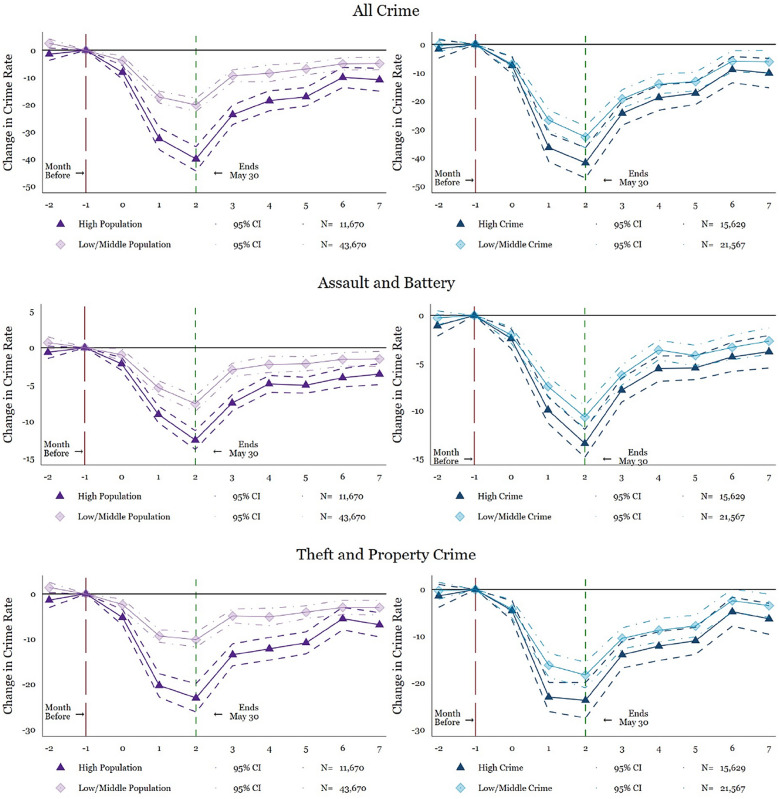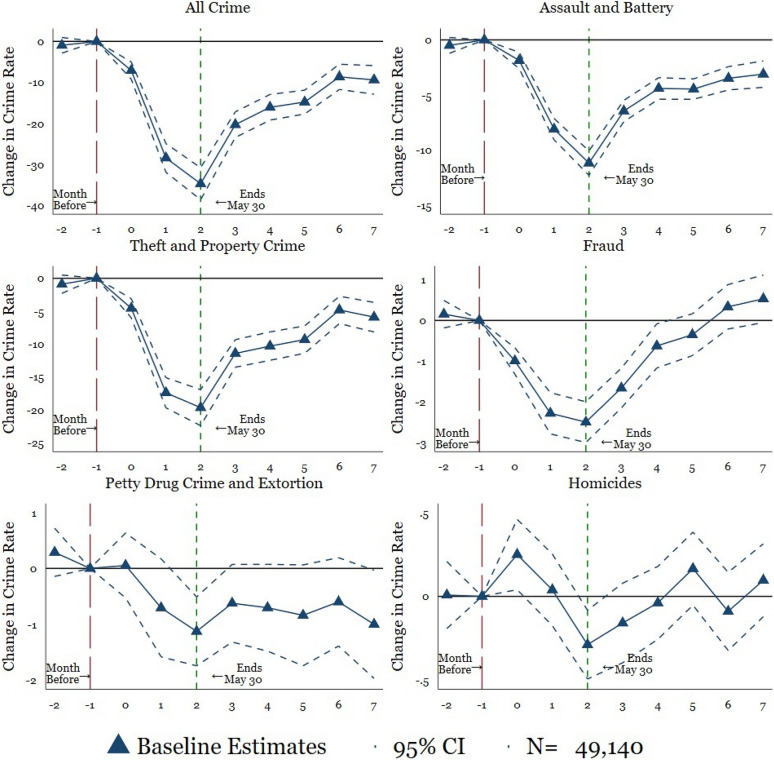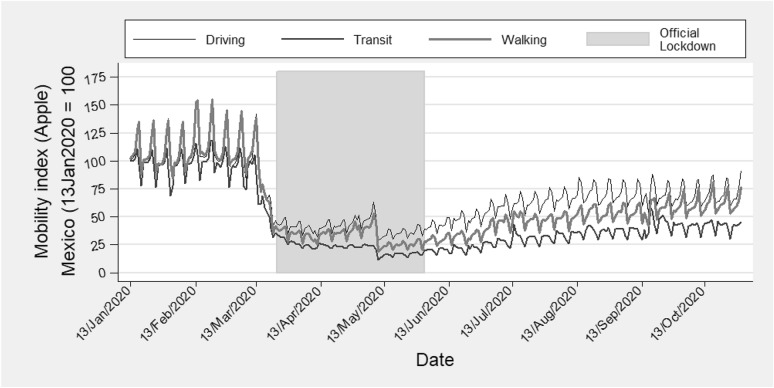COVID-19 期间的 U 型犯罪复苏:墨西哥全国犯罪率的证据。
IF 4.3
3区 材料科学
Q1 ENGINEERING, ELECTRICAL & ELECTRONIC
ACS Applied Electronic Materials
Pub Date : 2021-01-01
Epub Date: 2021-06-30
DOI:10.1186/s40163-021-00147-8
引用次数: 0
摘要
现有的经验证据表明,COVID-19 封锁导致犯罪总量减少。然而,当封锁措施放松时又会发生什么呢?本文探讨了 COVID-19 大流行病如何影响墨西哥全国的犯罪率。我们使用了墨西哥国家公共安全系统提供的全国犯罪数据,该系统报告了市一级的攻击和殴打、盗窃和财产犯罪、欺诈、毒品犯罪和敲诈勒索以及凶杀率。我们的研究结果表明,大多数犯罪都呈 U 型趋势--当封锁结束时,犯罪率会回升到大流行前的水平。本文章由计算机程序翻译,如有差异,请以英文原文为准。



The U-shaped crime recovery during COVID-19: evidence from national crime rates in Mexico.
The existing empirical evidence suggests a reduction in aggregate crime as a consequence of the COVID-19 lockdown. However, what happens when lockdown measures are relaxed? This paper considers how the COVID-19 pandemic affects crime rates throughout Mexico when the stay-at-home orders end. We use national crime data from Mexico's National Public Security System, which reports municipality-level rates on assault & battery, theft & property crime, fraud, drug crimes & extortion, and homicides. Our results show that the majority of crimes follow a U-shaped trend-when the lockdown ends-crimes rise back to pre-pandemic levels.
求助全文
通过发布文献求助,成功后即可免费获取论文全文。
去求助
来源期刊

ACS Applied Electronic Materials
Multiple-
CiteScore
7.20
自引率
4.30%
发文量
567
期刊介绍:
ACS Applied Electronic Materials is an interdisciplinary journal publishing original research covering all aspects of electronic materials. The journal is devoted to reports of new and original experimental and theoretical research of an applied nature that integrate knowledge in the areas of materials science, engineering, optics, physics, and chemistry into important applications of electronic materials. Sample research topics that span the journal's scope are inorganic, organic, ionic and polymeric materials with properties that include conducting, semiconducting, superconducting, insulating, dielectric, magnetic, optoelectronic, piezoelectric, ferroelectric and thermoelectric.
Indexed/Abstracted:
Web of Science SCIE
Scopus
CAS
INSPEC
Portico
 求助内容:
求助内容: 应助结果提醒方式:
应助结果提醒方式:


